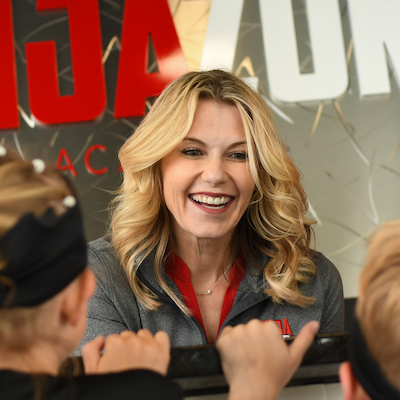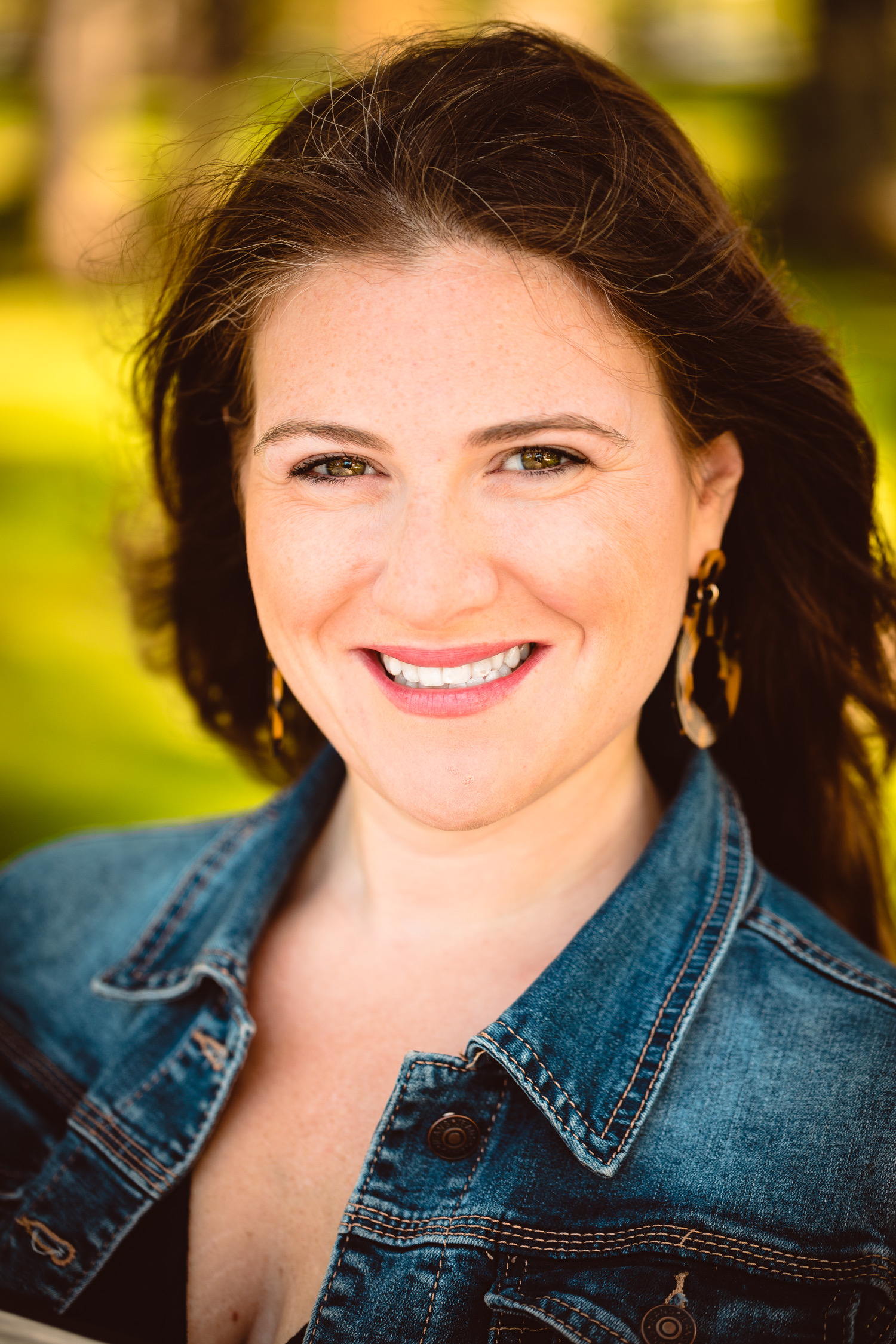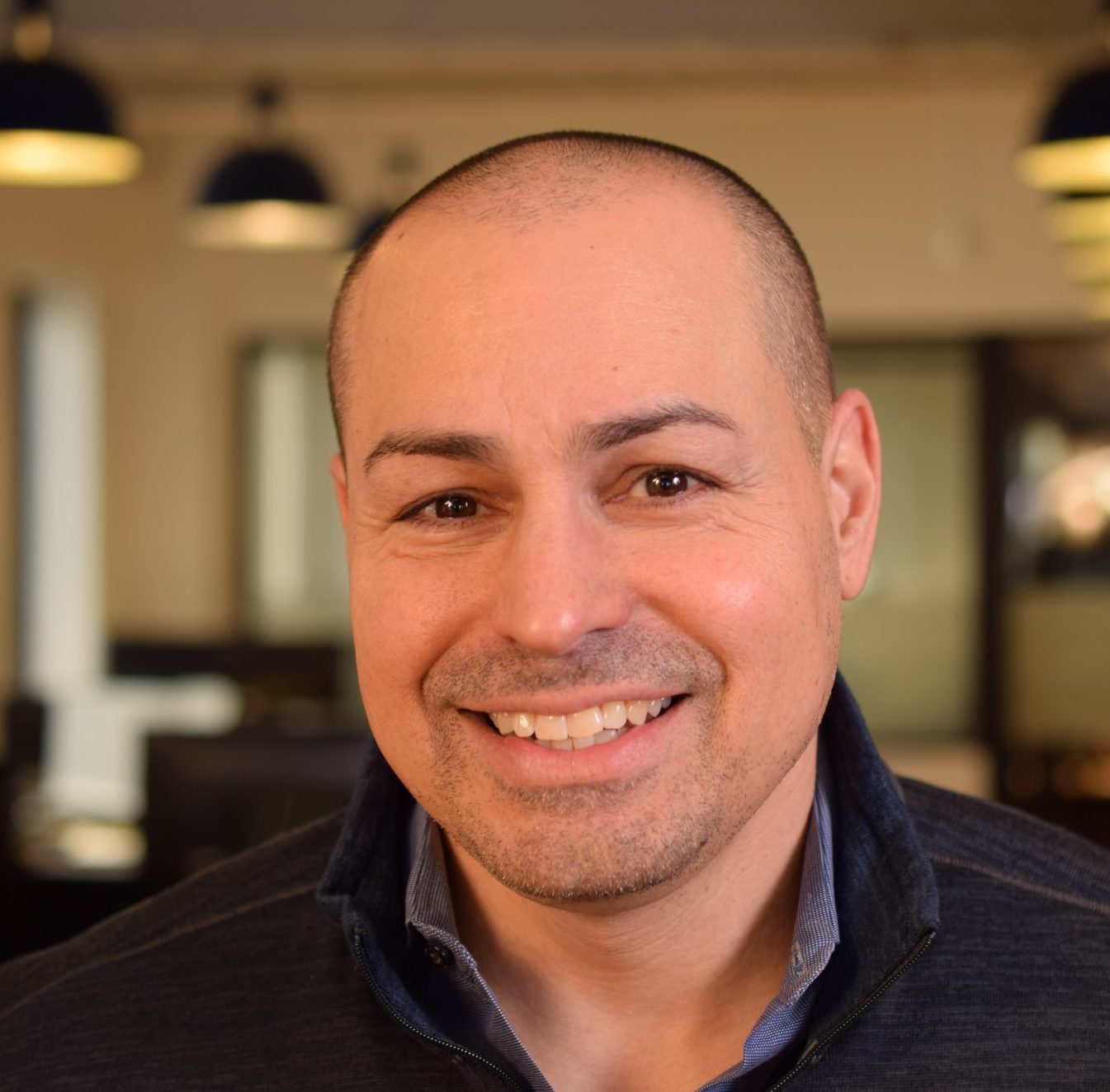What are we talking about?
Adding meditation to your life.
Why is meditation important for the future of work?
The world of business is just going to keep getting harder to predict. Leaders need to have something in their life that stabilizes their mind instead of constantly zig zagging from one thing to another.
What did Casey Wright teach us about meditation?
Casey said she built her business through hustle and grind. “As soon as I hit a wall, I’d zigzag to the next one.”
She ended up showing up to a Tony Robbins conference very stressed out and saw a woman who was advertising some meditation courses. She started it right away and is not shy to say that it changed her life.
Casey said, “Every time your business triples, it’s a different business.” What enabled you to grow to one level won’t be enough to get to the next one. Meditation was one of the things that helped her get to the next level.
Casey practiced meditation on her own, but many others on her team started to notice the change in her demeanor and did the same thing. Casey said you can’t push these kinds of lifestyle changes on your team, but “culture can change a lot faster than you think.” Within just a few months, most of the key people on her team were practicing and were in a much healthier mindset.
Casey runs a remote company with people all over the country. She talks about the benefits that brings (managing energy, and not time), and why hitting the transition moments with your kids is more important than quantity of time.
More from Casey Wright
Today, we have Casey Wright. She’s the CEO of the Ninja Zone and this is Work Minus Zig Zags. Hi, Casey. How are you?
Hey, doing great.
It’s great to have you on. You have a very interesting story that we’re going to get into about how you do things, but I want you to tell us first about the Ninja Zone and what it is.
The Ninja Zone originally started as a way to rebrand and remarket a gymnastics-like program especially for high energy little boys. It is now morphed into a really exciting new kids sport. So, it’s a fusion of parkour, obstacle course racing like American Ninja Warrior, gymnastics ,and a little bit of martial arts. We license the entire program all over the world. We’re in 340 locations worldwide.
Wow. So, when you started as a gymnastic thing, that was your upbringing, that’s your background.
Yeah. I was a high level gymnastics coach for most of my life. My parents were gymnastics coaches. I learned a lot of leadership and really just how to build confidence and be excellent at something coaching competitors at that high level. And when I stepped away from coaching, that’s when I really realized the confidence that was gained in the sport of gymnastics and men’s gymnastics just wasn’t cutting it. There wasn’t a lot of participation. And then overall, felt like there was a real need for just programming for little guys with energy. And there wasn’t a lot out there.
We’re talking to a lot of people who are shaping the culture. They’re the leader of a company that’s in this growth stage. So, tell us about your growth story that you’ve been through. What was it like to go from just one location? Now you have over 300. Tell us about that experience.
I heard once that every time your business triples, it’s a different business. And what that means to you personally is the decisions that you make and the things that you do day by day change very rapidly. And that can be very tough because just as you feel like you’ve learned something new and you get in a groove, you’ve got to go again and go again and go again to keep up with the growth and the demand. For me, I went from basically focusing entirely on operations, which was how the product and the program was created, to then having to really, really learn all aspects of business really fast. It was really fun. It was really exciting. I love learning new things. I felt like I was just opening up these doors to all these new hallways and it was very exciting. But it almost really put me in, I’m going to use the word manic, but looking back, a little bit of a manic state, the not sleeping and the go, go, go. It was a pretty fascinating time in my life, and not that it isn’t still fast moving, but I don’t feel the same way I did in the beginning years.
So, let’s look at that because you have something that you want to share with us. We’re calling this Work Minus Zig Zags. So, tell us about that zig zag life. What does that mean to you?
I always felt like I was bouncing off walls. I’ve always been gritty and resilient and hard working and that was just who I was. And so, it was almost like if I wasn’t suffering, I wasn’t working. And basically how I went about building the company, it was just grind and work and grind and grind, and I would hit a wall, zig zag to the other one and zig zag to the other one, or make mistake and just go back and forth and back and forth. And I think finally it got to the point where my body and my brain said, “Hey, I’m done with this. I’m dizzy. Let’s try something new.”
So, what was the thing you found that helped you with that?
What was interesting is when you start to look for answers, and it was just a rabbit hole and it just kept getting into bigger and bigger rabbit hole. I started out with business videos and then I ended up at personal development conferences and Tony Robbins all over the world. Those things are amazing and I will stay true to that. I mean, it’s a part of my life still every day. But specifically I was standing outside of a Tony Robbins conference in New York City and I met this woman. It was 10 o’clock at night. She was standing in front of me and she had this bag and it said stress less, accomplish more. And I tapped her on the shoulder because I was there because I was searching for answers. I had this company. I just had so much passion, so much drive, but it was affecting my relationships. It was affecting my health a little bit. I had a lot of guilt as a mother not knowing where I should be spending, not my time but more of my focus. And so, anyway, she turns around and she was just glowing. And I was like, “Who is this?” I mean, she was literally glowing her face. It was 10:30 at night, and we’d just been in a conference for 12 hours, and no one had eaten anything all day. So, anyway, she starts telling me and it was an online meditation program. And I said, “You know what? I think I’ll try it.” And it literally started with a 10-day program and I had tried Headspace and a couple of the other apps. People say you’re supposed to meditate. I was doing it because I thought I was supposed to. You’re supposed to do this kind of exercise. You’re not supposed to eat whatever in the morning. But I was just doing it because I thought I was supposed to be doing it and I wasn’t really getting much from it other than a little bit of a break.
And her program, the way she explained it, the way she talked, the way she educated about meditation just really sunk in. It hit both sides of my brain, and from a scientific and logical perspective, I could really understand. And one of the things that she teaches is you don’t meditate to get good at meditation, you meditate to get good at life. And so, at that time, this was probably, I don’t know, several years ago now, three, three and a half. I didn’t tell anybody because I’m like, “What am I doing? I’m sitting here not doing… I’m not working. I’m not getting anything done.” It’s really like we have a hard drive in our brain, our subconscious that has been collecting a whole lot of dust and programming all of our lives and you have to really defrag that. So, I meditate twice a day, once in the morning and once before dinner, in order to continue to keep that fresh. But it was about six months in, I didn’t tell anybody I was doing it, and I tell my people everything. I mean, I wear my heart on my sleeve. They know everything about my personal life. I’m an open book. But this was one that I was just like, I don’t know, I was still trying to figure it out. About six months in, I look back and I just couldn’t believe the change in my attitude, in my reaction, the way I reacted to things. I used to be very reactive, cut people off short. And it just gave me the ability to pause and wait and rise above and check out the situation before I choose to make a reaction. And I say this because my team at work, they started meditating during the meetings that I wasn’t in. They would put just a little meditation at the beginning. And most of my team has picked up this practice and I never once encouraged it. It was 1,000% by the change that they saw in me. I never pushed it. I never said, “You guys need to try this.” Never. And then when I saw them do it, I’m definitely a believer. I will never not.
I love this story a lot because we talk about a lot of ideas on Work Minus, and a lot of them stay in people’s minds, like I should try that, or other people should be doing that, I wish my whole company would do this. But the only model that seems to stick and the one that really makes change is when the leader actually does it, and says this is important enough in my life that I want to do it. And then other people see that and then they pick it up and go through things. I love that that’s your story, too.
Yeah. It’s really “I want some of what you have. You’re different now.” And they have to be ready, too. They really have to be ready. You can’t push it on them or it actually works the opposite way you want it to.
Have you had people that have had that experience where they’ve tried it and they’ve just not been in the right frame of mind or stage of life or something that doesn’t work for them?
If I had, they haven’t told me about it, because I think the ones that have started, they knew it was time. Now, I have some people that are better as far as more consistent than others, a little more committed. But that’s a general personality thing, too. So, as far as that, it’s just a part of who we are. It’s blocked out in our calendars.
And how big of a team are you talking about that will practice this?
This would be really my leadership team, which is only 10 people. We have about 150 people in the company. And I hope that it will eventually, and I know it will, I know it will. As we continue to improve our infrastructure and continue to improve the relationships. Ninja Zone is very new. I also have several other companies, five brick and mortar gymnastics facilities that have the Ninja Zone programming, and we have a fulfillment center and a couple other things going on. So, I had to take a lot of teams and put them together. So, that was really our big initiative in 2019. So, it’s amazing how culture can change a lot faster than you think. And mind you, we’re taking the culture of high level gymnastics coaches. We’re not a laid back type of crowd.
So, I want to get back into the statement you just made. Culture can change a lot faster than you think. Because I think a lot of leaders and culture shapers will look at that and say, “That’d be great, but we’re talking about years before I can really see some percolation in this throughout that.” So, what is it about this thing that made it faster? And do you think other topics could also go that fast?
I think you do anything that, number one, that works. It’s got to really work. You can’t try to push an initiative through and either be inconsistent or uncommitted and expect for it to change people. Just for instance, putting in Slack. For us, 100 of our employees are part-time and a lot of them don’t own computers. So, you think that that would be a big thing, but you get what you celebrate. That’s really what it is. And I’m sure we’ve all heard that before, but I think that when you continuously celebrate something and talk about it over and over again, it just goes a lot faster. And especially with this, it’s part of your day, every day twice a day, you can’t not. It’s not like you do a training and then leave.
That’s great. What is it like for people who are new to join your team or people who are entering into that? Is it like what’s everybody doing right now? They’re freaked out a little bit by it? Or is it welcome? What’s that like?
Our leadership team works remotely so it’s not like we have… we will. We’re building a facility. I wonder what that will look like. But I think people a lot of times do it on their own time, in the car, whatever. It’s not like you’re walking around watching people meditate. That doesn’t happen. But I think for new people coming in, it seems like every new employee we hire raises our average. That’s what I feel like because you got to be able to relate to people. And we really try to hire people that see the big picture. And you hear a lot about work life balance. I’ve never been a fan of that concept. I think it’s an energy balance. It has nothing to do with time. What’s time? When you’re having fun, time is nothing. So, yeah, it’s a different kind of person.
Yeah, for sure. You had mentioned time earlier when you talked about time with your children, that it wasn’t something you really stressed about. So, lead us into that because I know a lot of other leaders really do stress about how much time I’m spending on the business versus my own life and family. So, why is that not so much of a tension for you?
It’s a feeling. I think that’s one thing that meditation really led me into is I really understand my feelings. Everything’s data. So, I look at it as I started. I got my little Apple Watch and I started my exercise routine. And I’ve now worn an Apple Watch for three years so I can tell how much I moved in 2017, ’18, ’19, by the day. Our emotions are the same way. How we feel in each moment of the day, you could give a score to, 1 to 10. You could TiVo it. Thumbs up, thumbs down. I said TiVo. That’s how old I am. You can do that. And when you think about your days cumulatively, you want to raise that average. That’s how you improve your quality of life. So, with my children, I could be sitting on the couch with them, but if I’m on my phone, you feel when you’re connected, you also feel when you’re disconnected. They will let you know when you’re disconnected. I’ve found a really good sweet spot in transitions with my children. It’s not the chunk of time. If I can hit them before, after school, and bed, these transitions, and the car rides, I make those intentional, and I feel deeply connected to them. And then I can fill that bucket and then if I need to leave for a week, it’s okay. They don’t freak out. They don’t stress out. I don’t feel guilty because I’m going out and getting what I need to fill up my bucket. Work fills my bucket. If I didn’t have four to six hours a day to just pour into spreadsheets, I love it. And I tell them that. I don’t go to work, I go to play. I’m learning how to be a better mommy. So, I think the balance comes from if people feel unbalanced or feel guilty, number one, it’s because maybe they should. We’ll say I learned that, that I wasn’t fully focused. Or two, they’re setting their standards by somebody else’s guidelines.
Yeah, I like that. Let’s close out. You mentioned that most of your leadership team, and I’m assuming most of your team is remote. So, that adds another layer of complexity when you’re trying to change a culture. And I guess it goes back to that you weren’t necessarily trying to change your culture when you started the meditation. It just kind of happened, right?
It all happens, the leader goes first.
So, in terms of other ways that having a distributed leadership team, what are some of the advantages you see in that when you’re trying to build this feeling of connection and a strong sense of purpose for all that? What are the advantages and one of the disadvantages when it comes to that remote mindset?
I definitely think we have to do what’s best for ourselves in our lives to be able to pour into our work. It’s not about trust. It’s not about hours that I want you punching in and saying I have these certain hours here. You see through the quality of work what’s there. And when you truly, like I said, let people manage their energy, not their time. So, we have people with kids in middle school, we have people that are pregnant, people that have young children. So, they have to manage their energy. My creators, man, they’re night owls. Their best work comes in at 1 am. Not me, that’s not going to happen. So, I think it’s really we focus a lot on the individual. And then we come together when it makes sense. The worst thing about working remotely is when you have a bad connection, even a Zoom meeting is better because people can’t talk over each other. One person and then the other, it just doesn’t work. Like one conversation. So, we love it. My part-time staff and my staff that’s at the facilities, they clearly have to be at the facilities. But that’s something that because I did that job before they are doing it, I realized how hard that is. I mean, four hours in a gym with kids is not like four hours sitting behind a computer. It’s very different. And we’re empathetic to that.
I love what you’re doing, Casey. It’s very inspiring to see. We came on to talk about meditation, but it’s clear that it’s bigger than that. It’s about living good lives. It’s about working well. It’s about enjoying the people you work with and enjoying your families. And you gave us a lot of good tips. We talked about the managing energy, not time, about changing culture, about how it can go a lot faster than other things. So, this has really given us a lot to think about and I hope a lot that we can be actionable about. We’ll put the specific app that you guys are using for meditation in our show notes. Anything else you can leave us with?
I’m a leader of a great company that does great things for kids. So, I always like to talk about the Ninja Zone and the Wright’s gymnastics companies. We teach from walking all the way up, excellence to just having fun and gaining coordination. So, we’re all around the city. You can look us up, wrightsgymnastics.com or theninjazone.com. And if it goes, I don’t know where all your podcast reaches, but Ninja Zones, they’re all over the world. So, theninjazone.com.
Excellent. Thanks so much for being on the show and sharing your story with us. We look forward to staying connected.
Okay. Thank you.
Casey is the NinjaZone Founder and CEO. She is a mom & bonus mom to four young children and wife to Jeremy. Casey started working in her parents’ gym as a receptionist at age 7 and has been fostering her entrepreneurial spirit and business skills since that time. During her time at the IU Kelley School of Business, she continued to pursue her passion for all things gymnastics. An early bloomer, Casey was the US’s youngest National Team Coach, Level 10 Judge, club owner, and led a few dozen incredible athletes to the NCAA, all inside of 3 decades. When Casey isn’t e-learning anything she can get her mouse on, she is busy living by her personal motto: “Be the first one on the dance floor.” She car-dances to country and hip-hop, and she hopes to learn the West Coast Swing. Casey is desperately waiting for an invitation to one of Gatsby’s parties, where she can show off her moves. In the meantime, she gets a kick out of watching other people dance. Especially Trainer Danny












